Pricing Guides & Dictionary of Makers Marks for Antiques & Collectibles

ANTIQUE PHONOGRAPHS:
A Guide to Researching Them
Join the most updated and complete collectibles research online - Learn more...
 Antique phonographs are fascinating pieces of history that bring to life the music and sounds of past eras. Whether you are a collector or simply interested in learning more about these vintage devices, there are a variety of resources available to help you research and identify antique phonographs. In this guide, we will explore the basics of antique phonographs, including their history, components, and key features. We will also provide tips on how to research and evaluate antique phonographs, including online resources and expert advice.
Antique phonographs are fascinating pieces of history that bring to life the music and sounds of past eras. Whether you are a collector or simply interested in learning more about these vintage devices, there are a variety of resources available to help you research and identify antique phonographs. In this guide, we will explore the basics of antique phonographs, including their history, components, and key features. We will also provide tips on how to research and evaluate antique phonographs, including online resources and expert advice.
What are Antique Phonographs?
Antique phonographs are mechanical devices that were used to play back sound recordings in the late 19th and early 20th centuries. The first phonographs were invented by Thomas Edison in 1877 and used a rotating cylinder to reproduce sound. Later versions, such as the Victor Talking Machine, used flat discs to record and play back sound.
Antique phonographs were popular from the late 1800s to the 1920s, and were commonly found in homes and public places such as dance halls and theaters. They were often ornately decorated with intricate designs and carvings, and some were even built into furniture pieces.
Components of Antique Phonographs
Antique phonographs typically consist of several key components, including:
- The cabinet or case, which houses the internal components and serves as a decorative element
- The turntable, which holds the record or cylinder and rotates it at a constant speed
- The tonearm, which holds the reproducer and allows it to move across the record or cylinder
- The reproducer, which converts the sound vibrations from the record or cylinder into audible sound waves
- The horn or speaker, which amplifies the sound waves and projects them into the air
Identifying Antique Phonographs
If you are interested in identifying and researching antique phonographs, there are several key features to look for. These include:
- The manufacturer and model number, which can often be found on a label or plate attached to the cabinet
- The type of record or cylinder that the phonograph is designed to play (such as 78rpm or 33rpm)
- The condition of the cabinet, including any damage or repairs that may have been made
- The quality and completeness of the internal components, including the motor, turntable, and reproducer
- The style and design of the cabinet, which can provide clues about the time period and origin of the phonograph
Researching Antique Phonographs Online
The internet is a valuable resource for researching and identifying antique phonographs. There are several online databases and forums that specialize in vintage audio equipment, including antique phonographs. These resources can provide information about manufacturers, models, and historical context, as well as photos and descriptions of various phonographs.
Some useful online resources for researching antique phonographs include:
- The Antique Phonograph Society (antiquephono.org), which provides resources and information for collectors and enthusiasts
- The Victor-Victrola Page (victor-victrola.com), which focuses on the history and identification of Victor Talking Machines and other vintage phonographs
- The Online Edison Phonograph Discussion Board (forum.talkingmachine.info), which is a forum for collectors and researchers to discuss and share information about antique phonographs
- eBay and other online auction sites, which can be a useful source of information and photos for identifying antique phonographs
Expert Advice for Researching Antique Phonographs
In addition to online resources, there are several experts in the field of antique phonographs who can provide valuable advice and guidance for collectors and researchers. These include:
- Antique phonograph dealers and restoration specialists, who have hands-on experience with these devices and can provide insight into their history and value
- The staff of museums and historical societies, who may have collections of antique phonographs or other relevant artifacts, as well as knowledge of the historical context in which these devices were used
- Authors and scholars who have written about the history and technology of antique phonographs, and can provide in-depth information and analysis of these devices
When seeking expert advice, it is important to approach these individuals with respect and professionalism. Be prepared to provide detailed information about the antique phonograph in question, and to ask thoughtful and informed questions.
Evaluating the Value of Antique Phonographs
Once you have identified and researched an antique phonograph, the next step is to evaluate its value. This can be a complex process, as the value of an antique phonograph can depend on a variety of factors, including:
- The rarity and desirability of the manufacturer and model
- The condition and completeness of the internal components and cabinet
- The historical significance or provenance of the phonograph
- The current market demand and availability of similar phonographs
To determine the value of an antique phonograph, it is often necessary to consult with experts in the field or to research recent sales of similar phonographs. Online auction sites such as eBay can be a useful source of information about current market values, but it is important to keep in mind that these prices can fluctuate depending on a variety of factors.
Conclusion
Antique phonographs are fascinating pieces of history that offer a glimpse into the sounds and music of past eras. By researching and identifying these devices, collectors and enthusiasts can gain a deeper understanding of their historical and cultural significance, as well as their value as collectible artifacts. With the help of online resources, expert advice, and careful evaluation, anyone can become a knowledgeable and informed collector of antique phonographs.
Unlock the true value of your collection with our comprehensive research guides from identifying makers' marks to appraising all kinds of antiques and collectibles, including items featured in this article.
Our up-to-date information will give you an accurate understanding of your items' worth. Don't miss out on this valuable resource - visit our research tools today!
In addition to some examples shown below on this page, you can also search our price guide for your own treasures.
Examples of related items from our Price Guides
-
 BRUNSWICK MODEL 110 FLOOR PHONOGRAPH AND
[more like this]
BRUNSWICK MODEL 110 FLOOR PHONOGRAPH AND
[more like this]
-
 VICTOR TALKING MACHINE V-I (1910-1916) H
[more like this]
VICTOR TALKING MACHINE V-I (1910-1916) H
[more like this]
-
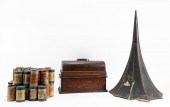 EDISON HOME PHONOGRAPH WITH HORN & 48 CY
[more like this]
EDISON HOME PHONOGRAPH WITH HORN & 48 CY
[more like this]
-
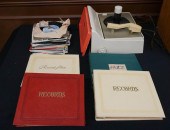 RCA VICTOR PHONOGRAPH WITH COLLECTION OF
[more like this]
RCA VICTOR PHONOGRAPH WITH COLLECTION OF
[more like this]
-
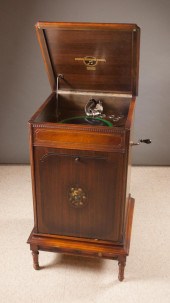 COLUMBIA DISC PHONOGRAPH, COLUMBIA PHONO
[more like this]
COLUMBIA DISC PHONOGRAPH, COLUMBIA PHONO
[more like this]
-
 EDISON PHONOGRAPH, EARLY 19TH C., OAK CA
[more like this]
EDISON PHONOGRAPH, EARLY 19TH C., OAK CA
[more like this]
-
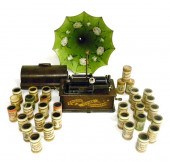 Early 20th C. Edison home phonograph Mo
[more like this]
Early 20th C. Edison home phonograph Mo
[more like this]
-
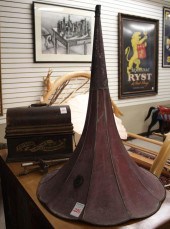 EDISON CYLINDER PHONOGRAPH WITH METAL HO
[more like this]
EDISON CYLINDER PHONOGRAPH WITH METAL HO
[more like this]
-
 EDISON PHONOGRAPH FRAMED MIRRORED ADVERT
[more like this]
EDISON PHONOGRAPH FRAMED MIRRORED ADVERT
[more like this]
-
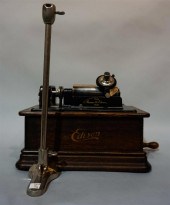 EDISON STANDARD PHONOGRAPH, MODEL DEDISO
[more like this]
EDISON STANDARD PHONOGRAPH, MODEL DEDISO
[more like this]
-
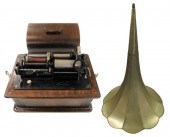 THOMAS EDISON "TRIUMPH" PHONOGRAPH WITH
[more like this]
THOMAS EDISON "TRIUMPH" PHONOGRAPH WITH
[more like this]
-
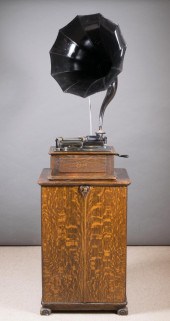 EDISON TRIUMPH CYLINDER PHONOGRAPH ON CA
[more like this]
EDISON TRIUMPH CYLINDER PHONOGRAPH ON CA
[more like this]
There are many more auction results available to our members...





